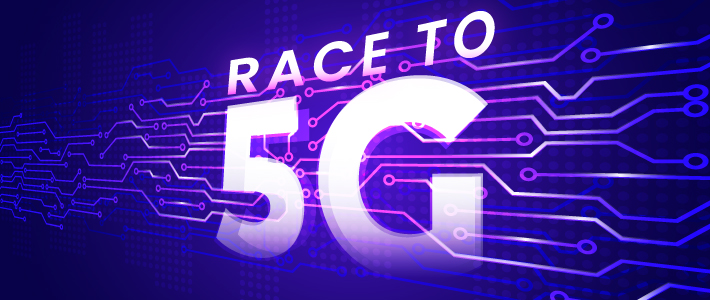With 5G spectrum auctions in India fetching over Rupees 150 thousand crores, all eyes were on how the Telecom Operators that were already stressed in India would recover this additional cost of spectrum charges. Herein lies the catch 22 problem. To recover the dues, one needs to first spend more on equipment and other 5G technology before providing it to users, post which they can charge the consumers for using an advanced 5G network.
Off the 3 private players VIL which is still trying to recover from its debt has been the slowest to deploy 5G network in India. Probably doing a wait and watch the game to see what strategy is deployed by the other two market leaders and then follow suit. Airtel on the one hand has started deploying 5G using the same 4G core network to enable a faster rollout of 5G services, albeit with lower enhancement in speed (owing to the inherent nature of the 4G network layer). Jio on the other hand has taken a slightly different approach, having a full standalone 5G network to be able to fully extract the complete potential of 5G.
However, the race to 5G is not just between operators, but between the operator and their customers. For now, the average speed being seen for 5G is around 200* Mbps for Airtel and around 500* Mbps for Jio. The question now is will operators be able to roll out 5G network services as fast as consumers are upgrading their devices to 5G, considering that both Airtel and Jio are providing trial / free updates to 5G to all their 4G customers.
As can be seen from the charts* below, average 5G download speeds since their launch have seen its shares of ups and downs.
Suggested Read: Internet of Things (IoT) and How 5G Enhances IoT
The launch of 4G in India saw a sharp fall in prices of 4G phones, which helped catapult the 4G uptake across consumers in India. However, this was led by Jio’s nationwide only 4G network launch coupled with its own branded feature phones costing under Rupees 2,000. This forced phone manufacturers to provide rock bottom prices starting from Rupees 4,000 for 4 G-enabled smartphones. This time around though there doesn’t seem to be any such trend of reduction of prices of 5G phones. The cost of 5G devices starts from Rupees 15,000 for Android and Rupees 60,000 for iPhone and goes upward.
A third race that remains to be seen, is between Android devices and iOS (iPhone) devices. Here again, the internet speed shown by the devices seems to be dependent on the operator in use. With Airtel, the average download speeds experienced on both types of devices are very neck and neck with 0.02% difference in the average download speeds. However, in the case of Jio, there is a huge disparity between the average internet speed experienced by users using an iPhone vis-à-vis an Android-based phone, with the Android-based phones reporting an average download speed of almost 60% higher than iPhone. The speeds of the two types of devices for both networks can be seen in the table given below :
| Android average Download speed* (Mbps) | iPhone average Download speed* (Mbps) | |
| Airtel | 186.59 Mbps | 186.63 Mbps |
| Jio | 419.59 Mbps | 262.52 Mbps |
Hence it goes to be seen if the rate of rollout of 5G sites and technology across India would be as fast as the rate of uptake of 5G from consumers and with which type of device.
* Based on crowd-sourced data collected from RedMango homegrown applications (between September 2022 and December 2022) that have been designed to capture the high bandwidth associated with 5G technology and which have been used across the world.
Suggested Read: What is 5G? How 5G compares to 4G



+ There are no comments
Add yours